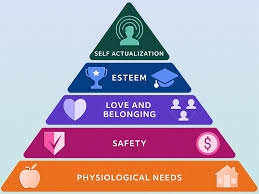business management 3-4 glossary?
1/33
There's no tags or description
Looks like no tags are added yet.
Name | Mastery | Learn | Test | Matching | Spaced |
|---|
No study sessions yet.
34 Terms
define stakeholder
A stakeholder is a person, group or organization with a vested interest, or stake, in the decision-making and activities of a business, organization or project. Stakeholders can have a direct or indirect influence on the activities or projects of an organization.
define corporate culture
the shared beliefs and values of people within the business
define official culture
refers to the formally stated values, norms, and practices that are promoted and endorsed by an organization's leadership. It often contrasts with the actual behaviors and beliefs of employees within the organization.
define real culture
the actual or prevailing beliefs of the business.
define decision making skills
a multistep approach whereby a selection is made between a range of different alternatives
define delegation skills
passing authority down the hierarchy to perform tasks or make decisions
define planning skills
is the process of determining objectives and devising strategies in order to achieve them
define interpersonal skills
the ability to deal or liaise with people and build positive relationships with staff
define leadership skills
is the skill of a manager to influence and motivate employees towards the achievement of business objectives
define communication skills
is a process of creating and exchanging information between people that produces the required response
define centralised decsion making
management makes decisions and pass on directions to those below them in a hierarchy
define de-centralised decision making
where employees are given responsibility for decision making in their own areas
define autocratic management style
Where all decisions are made by managers and communication is one way - downwards.
define to increase market share
Market share is the proportion of that industry’s sales that you control. It is a sign of competitive advantage.
what are employees interested in
to receive fair wage or
salary and good working conditions
to have a work life balance
to gain job satisfaction
to have job security
what are customers interested in
to obtain high quality goods and services for a reasonable price
receive high level of customer services
what are owners interested in
The profitability of the business
To receive a return on the investments (dividends and increased shareprice for shareholders.)
Ethical business operations
what are managers interested in
to receive an increased salary for achieving business objectives
to have the opportunity for career advancement
job satisfaction
what are suppliers interested in
increasing their revenue - earning profit from raw materials and resources they supply
be paid promptly and fairly
maintain a positive professional relationships
what are the general community interested in
to benefit from employment opportunities created by the business
for the business to participate in the community
ensure the business operations are sustainable in the local community
define hr
Responsible for managing the overall relationship the business has with employees in order to increase the efficiency of both the employees and the business
maslows heirarchy
Suggest that an employee has 5 levels of needs: physiological, safety, social, self-esteem, self actualisation
Lower needs must be satisfied before an individual can move up to the next level of needs.
Once a need has been met, it is no longer a motivator.

define motivation
willingness or drive to exert high levels of effort to reach business objectives, while also satisfying individual employees need to achieve.
similarities and differences between awards and agreements
sim:
both use awards as the base level for wages and conditions
once agreed, both are legally binding and enforceable
both can have union involvement
diff:
methods of negotiation are different
the application is different
cost
locke and latham theory of motivation
clarity, challenge, task complexity, commitment and feedback